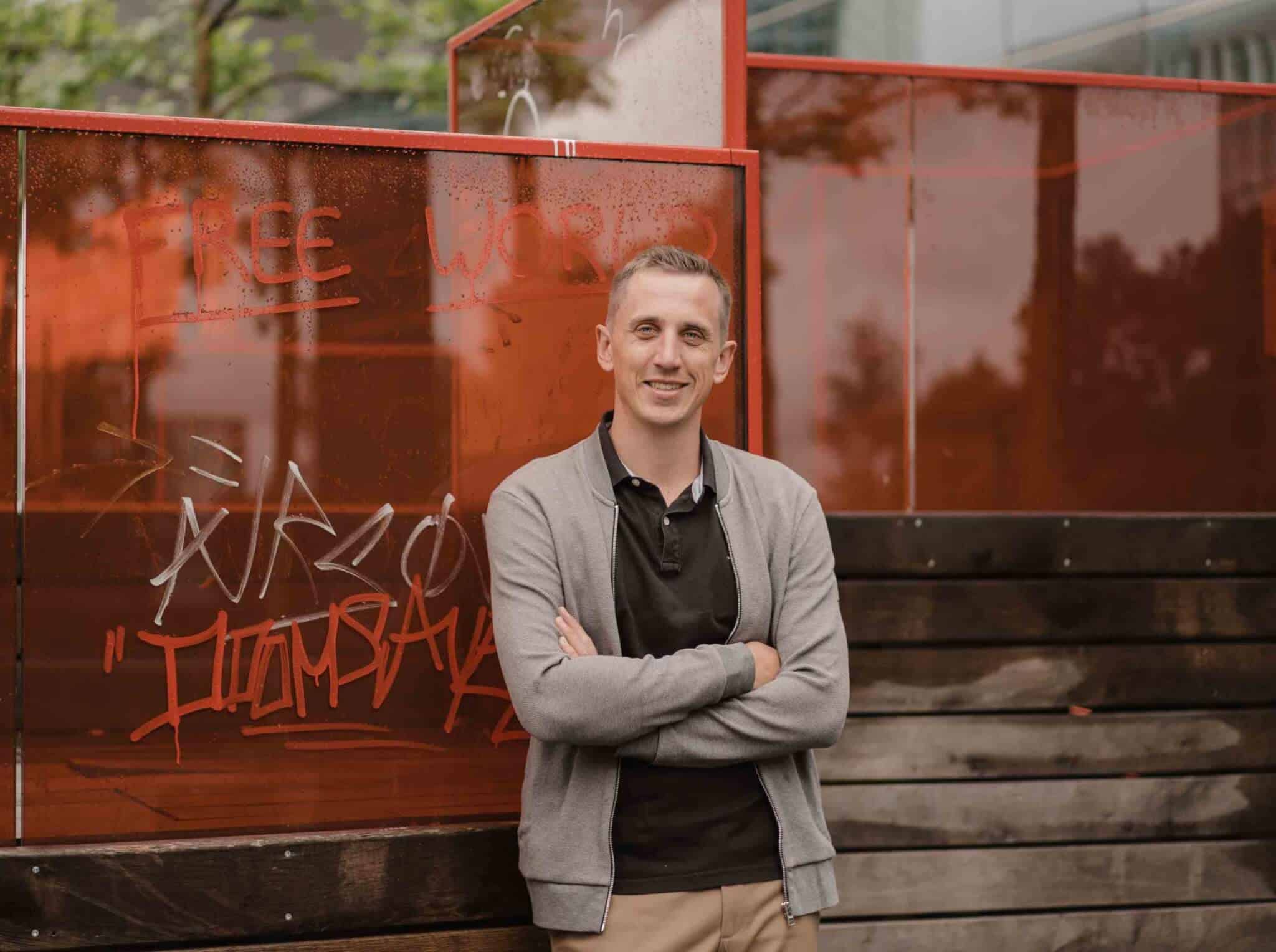Could employees directly contribute to the digital transformation of their company? According to Yoann Hertienne, Associate Manager at Accenture Luxembourg, specialized in innovation, the answer is yes. “Without having to be experienced developers, coders, or IT experts, and thanks to low-code and no-code frameworks, chatbots and other artificial intelligence technologies, all employees – from HR to sales teams – can play a role. However, before this can happen, companies need to train their entire staff to think like ‘technologists’.”
Photo: Yoann Hertienne, Associate Manager at Accenture Luxembourg / Image Credits: Marion Dessard / Silicon Luxembourg
Among the five top trends in Accenture’s Technology Vision 2021, ‘I, Technologist: The Democratization of Technology’, emerges as a strong contender for helping companies keep pace with the new and continuously changing needs of markets and customers.
“The idea is to offer technologies to every employee and to explain them how and when to use it, so that they can implement digital solutions themselves to become more efficient in their jobs,” explains Yoann Hertienne, Associate Manager at Accenture Luxembourg, specialized in innovation.
AI, chatbots, low-code and no-code
With the democratization of technology, employees no longer need to be IT experts, nor do they need to have prior skills as developers or coders. “Everyone can contribute to the digital edifice in the organization of their own tasks and other company activities,” Hertienne explains.
The main driver for this is the widespread availability of new tools and frameworks. For example, Cloud technologies, such as chatbots, artificial intelligence software or digital workers, while service providers like Amazon and Microsoft offer low-code and no-code frameworks that can be quickly developed and simply integrated into an organization’s IT environment.
“In this way, employees in sales, accounting, HR or procurement departments, or even those operating in the field, can implement digital solutions themselves and perhaps propose a new product or application that is then deployed throughout the organization,” Hertienne predicts.
“Moreover, these departments could re-orient themselves in innovation mode, assigning task forces with developing low-code and no-code applications, which can then go into production. The IT department keeps the management of the applications lifecycle (deployment, maintenance, updates, etc.)”
For Hertienne, such practices would generate an innovation mindset in teams while breaking down silos between operational staff and IT specialists. This would create a common front across the organization, involving everyone in proposing and developing new ideas from start to finish.
Technology-fueled collaboration
But first, companies will need to train their entire staff to think like ‘technologists’, says Hertienne: “Employees won’t be asked to follow advanced training to become developers; rather, it will involve awareness programs about the tools available to them and how to use them. Each employee will thus become a technology collaborator and possibly a business developer for the organization. Companies will also have to clearly communicate their vision on this new form of collaboration fueled by technology,” he adds.
First signs of change in Luxembourg
This approach is already being adopted in some companies in Luxembourg, according to Hertienne. But in common with the other trends highlighted in Accenture’s Technology Vision 2021, the financial services industry is taking the lead with other industries lagging behind.
“Banks, which were reluctant to adopt the cloud a few years ago, are now readily using this technology, as containment has come and gone,” Hertienne observes. “But we’re still in the phase of training and raising awareness among employees, especially on technologies like blockchain and crypto-currencies.”
According to Hertienne, it will take another two to three years before this collaborative vision becomes reality and employees appropriate the ‘I, technologist’ mindset, ready to use new tools and frameworks to improve their own processes and daily tasks.
